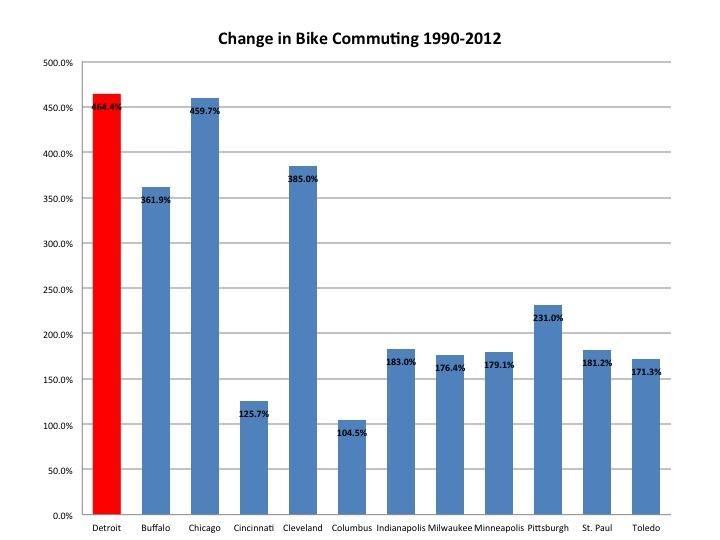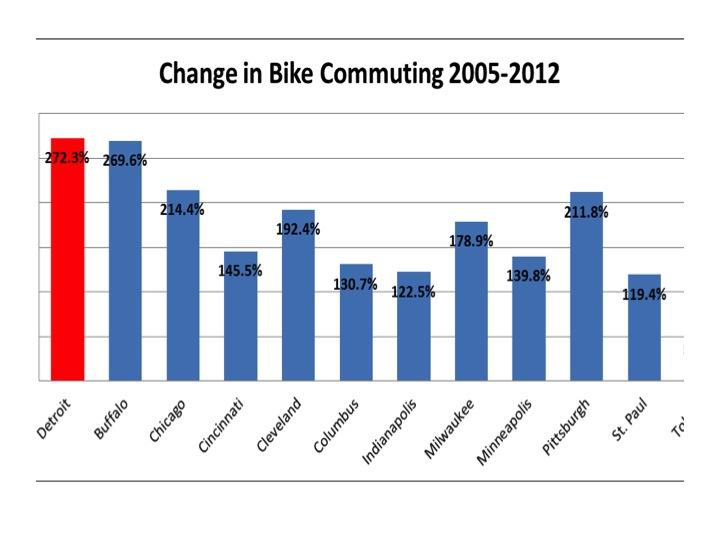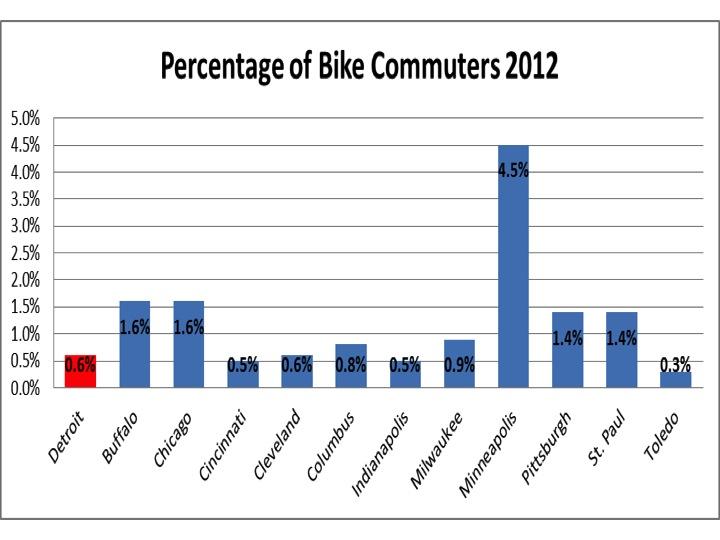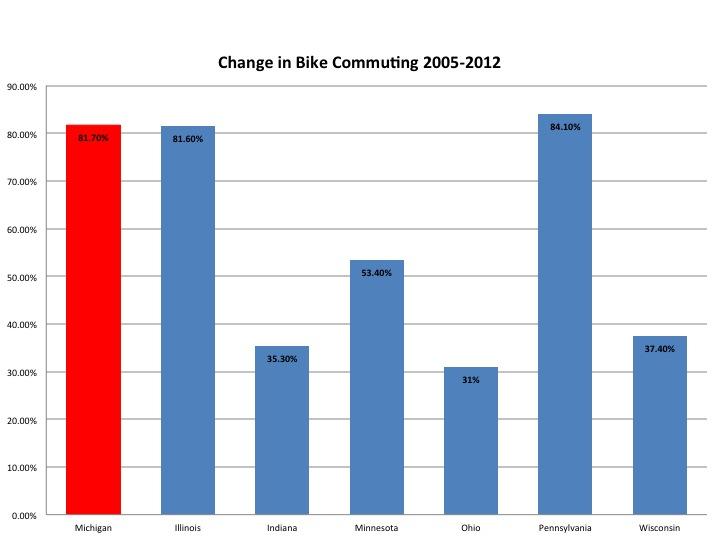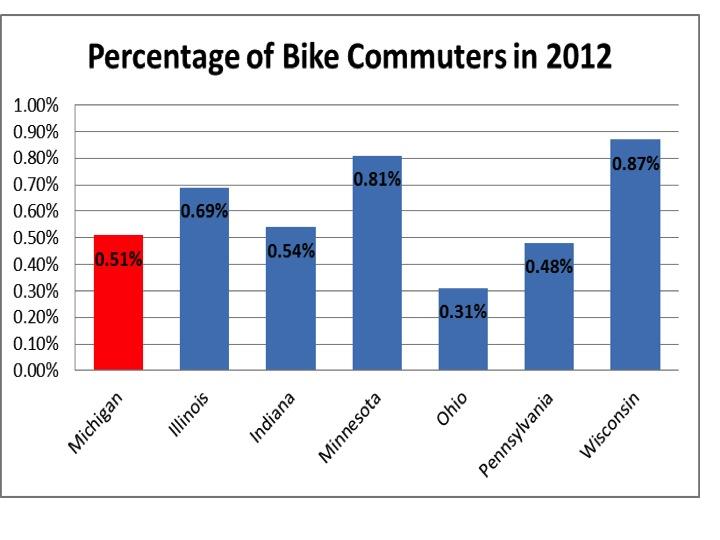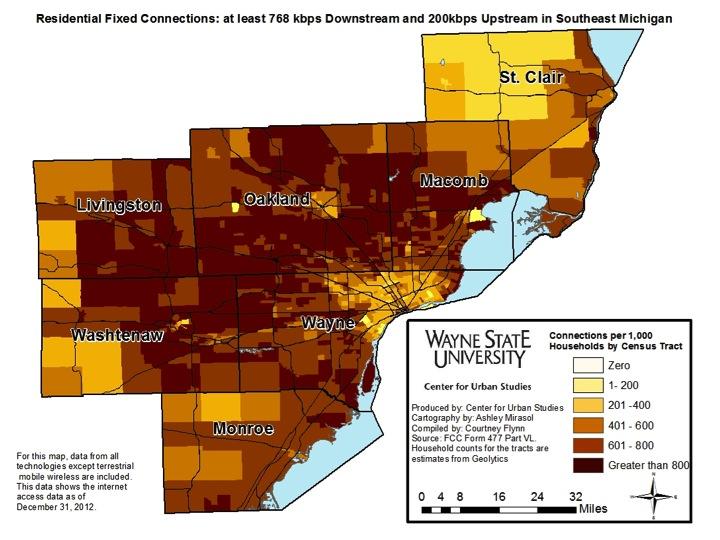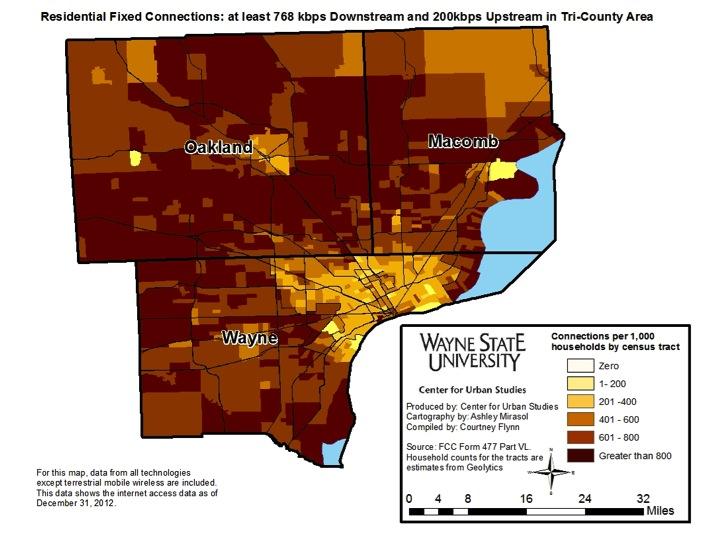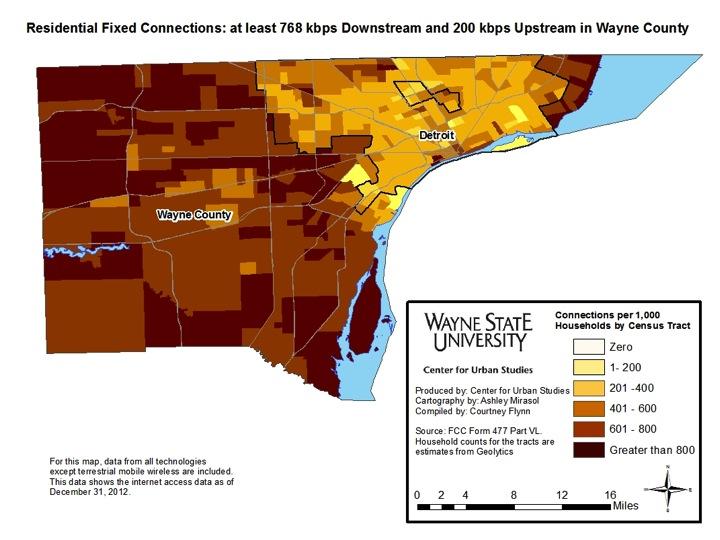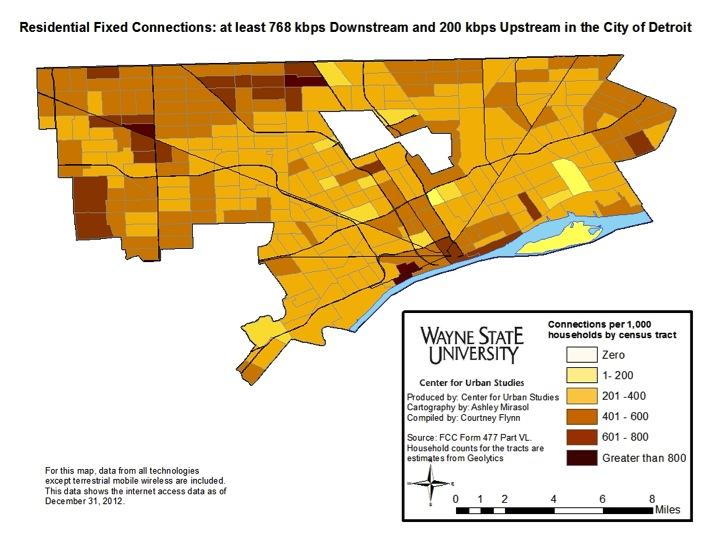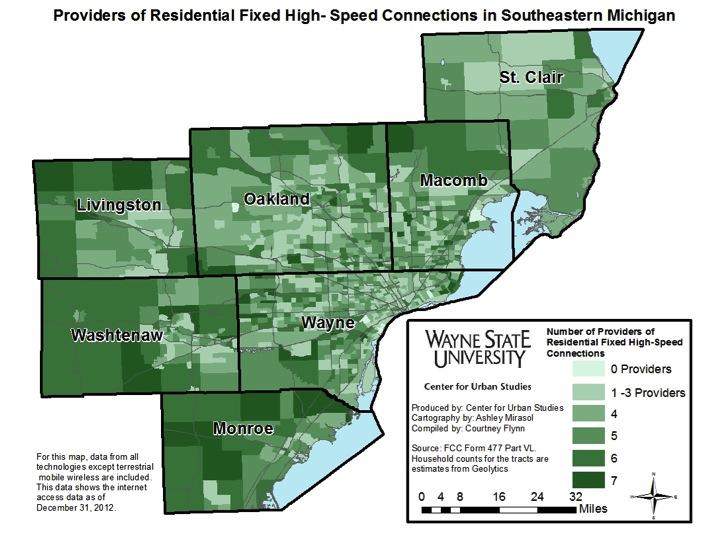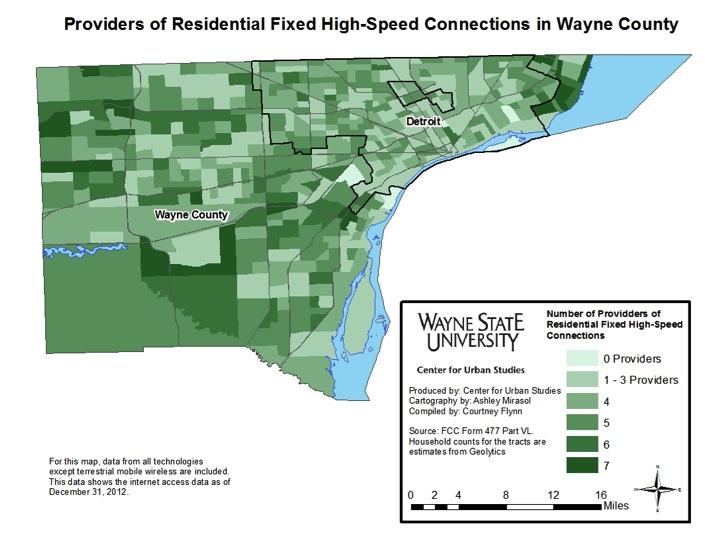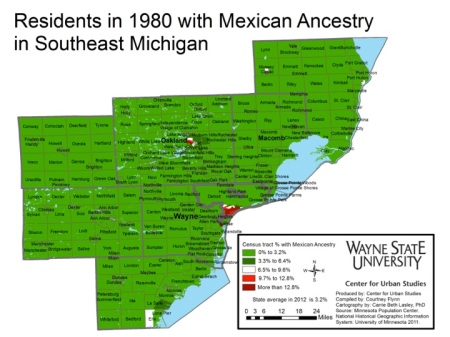In a previous post, we examined the rates of bike ridership in Detroit and in Michigan as compared to other Great Lakes states and cities. We found that bike commuting is growing in Michigan and Detroit at a fast rate, but that the rates land it somewhere near the middle of peers at this time. In this post we will explore the rates within the region and city to better understand the local numbers.
The state of Michigan’s average rate of bicycle commuting is 0.59%, but at the county level, most of the regions fall behind this average. It is only Washtenaw County, with two large universities, that has a higher rate of bike commuting. College towns like Ypsilanti and Ann Arbor often have such high rates of bike commuting because of the large student population. The Bicycle League of America recognized Ann Arbor, and its 4.9% rate of bike commuting, as third-highest in the Midwest for a city of its size, as shown on the table below. Ann Arbor ranked just behind Madison, Wisc. (6.2%, home of University of Wisconsin), and Evanston, Ill. (5.3%, home of Northwestern University), and just ahead of Minneapolis (4.5%, University of Minnesota, others), and Bloomington, Ind., (3.9%, home of Indiana University).
While the college towns stand out when looking at the township-and-city level, other areas show high rates of bike commuting, including Dundee and Monroe in Monroe County, City of Wayne and the Grosse Pointes areas in Wayne County, New Baltimore in Macomb County and Port Huron in St. Clair County.
Macomb and Oakland and Livingston counties, primarily suburban in nature, have low rates of bike commuting. Oakland has had a slight uptick in bike commuting along the Woodward Corridor. Just five communities in Oakland meet or exceed the state average, while 20 others have 0% of commuters using bikes. In Macomb, it was three communities that meet or exceed the state average, and 12 have no bike commuters.
A closer look at Wayne County at the Census tract level shows a varied juxtaposition of biking neighborhoods with non-biking neighborhoods. Much of the City of Detroit and the near Wayne County suburbs follow a pattern of concentrated bike commuting. For example, Highland Park, inset in Detroit, is comprised of six Census tracts. The two tracts east of Woodward average a 1.35% bike commuting rate, while those west of Woodward have no bike commuters in the data. Some areas along Jefferson Ave., near Downtown, in Midtown or in Southwest Detroit also show higher levels. Other communities that included some areas with high er commuting include Allen Park, Canton, Dearborn, Dearborn Heights, Grosse Ile, Hamtramck, Lincoln Park, Livonia, Southgate, Taylor, Wayne (city), and Wyandotte.





